Adaptive Cache Deployment Based on Congestion Awareness and Content Value in LEO Satellite Networks
-
摘要: 低地球轨道(LEO)卫星网络凭借其全球无缝覆盖与低传输延迟的优势,被视为空天地一体化通信系统的关键组成部分。然而,用户请求若未命中本地卫星缓存,则需通过星间链路或星地链路回源,从而引入较高延迟。同时,受限于星载硬件资源,卫星节点的存储容量极为有限,难以支持大规模内容缓存,这对动态自适应的缓存部署机制设计提出了严峻挑战。该文聚焦LEO卫星网络中的缓存部署问题,基于拥塞感知和内容价值,提出一种自适应缓存部署方案,根据网络的实时状态实施缓存决策,从而提升缓存命中率、降低星地回传负载、优化用户服务质量。首先,卫星节点实时监测链路拥塞状态,并将链路拥塞的概率通过数据包反馈给下游节点;其次,结合兴趣包的内容流行度、数据包的新鲜度构建二维价值评估模型;最后,依据拥塞等级动态调整缓存阈值,再结合跳数控制因子进行缓存决策。仿真结果表明,所提策略在缓存命中率、平均路由跳数及平均请求时延3项核心指标上均优于基于流行度感知的邻近度缓存(PaCC)与处处缓存(LCE)策略:在缓存容量动态变化场景下,缓存命中率较PaCC和LCE策略分别提升9.5%和43.7%;在Zipf分布参数变化场景下,缓存命中率较上述2种策略分别提升8.7%和29.1%;在网络传输性能方面,所提策略的平均路由跳数较PaCC策略总体下降2.24%,平均请求时延则较PaCC和LCE策略总体下降2.8%和9.5%。Abstract:
Objective Low Earth Orbit (LEO) satellite networks are central to future space–air–ground integrated systems, offering global coverage and low-latency communication. However, their high-speed mobility leads to rapidly changing topologies, and strict onboard cache constraints hinder efficient content delivery. Existing caching strategies often overlook real-time network congestion and content attributes (e.g., freshness), which leads to inefficient resource use and degraded Quality of Service (QoS). To address these limitations, we propose an adaptive cache placement strategy based on congestion awareness. The strategy dynamically couples real-time network conditions, including link congestion and latency, with a content value assessment model that incorporates both popularity and freshness.This integrated approach enhances cache hit rates, reduces backhaul load, and improves user QoS in highly dynamic LEO satellite environments, enabling efficient content delivery even under fluctuating traffic demands and resource constraints. Methods The proposed strategy combines a dual-threshold congestion detection mechanism with a multi-dimensional content valuation model. It proceeds in three steps. First, satellite nodes monitor link congestion in real time using dual latency thresholds and relay congestion status to downstream nodes through data packets. Second, a two-dimensional content value model is constructed that integrates popularity and freshness. Popularity is updated dynamically using an Exponential Weighted Moving Average (EWMA), which balances historical and recent request patterns to capture temporal variations in demand. Freshness is evaluated according to the remaining data lifetime, ensuring that expired or near-expired content is deprioritized to maintain cache efficiency and relevance. Third, caching thresholds are adaptively adjusted according to congestion level, and a hop count control factor is introduced to guide caching decisions. This coordinated mechanism enables the system to prioritize high-value content while mitigating congestion, thereby improving overall responsiveness and user QoS. Results and Discussions Simulations conducted on ndnSIM demonstrate the superiority of the proposed strategy over PaCC (Popularity-Aware Closeness-based Caching), LCE (Leave Copy Everywhere), LCD (Leave Copy Down), and Prob (probability-based caching with probability = 0.5). The key findings are as follows. (1) Cache hit rate. The proposed strategy consistently outperforms conventional methods. As shown in Fig. 8 , the cache hit rate rises markedly with increasing cache capacity and Zipf parameter, exceeding those of LCE, LCD, and Prob. Specifically, the proposed strategy achieves improvements of 43.7% over LCE, 25.3% over LCD, 17.6% over Prob, and 9.5% over PaCC. Under high content concentration (i.e., larger Zipf parameters), the improvement reaches 29.1% compared with LCE, highlighting the strong capability of the strategy in promoting high-value content distribution. (2) Average routing hop ratio. The proposed strategy also reduces routing hops compared with the baselines. As shown inFig. 9 , the average hop ratio decreases as cache capacity and Zipf parameter increase. Relative to PaCC, the proposed strategy lowers the average hop ratio by 2.24%, indicating that content is cached closer to users, thereby shortening request paths and improving routing efficiency. (3) Average request latency. The proposed strategy achieves consistently lower latency than all baseline methods. As summarized inTable 2 andFig. 10 , the reduction is more pronounced under larger cache capacities and higher Zipf parameters. For instance, with a cache capacity of 100 MB, latency decreases by approximately 2.9%, 5.8%, 9.0%, and 10.3% compared with PaCC, Prob, LCD, and LCE, respectively. When the Zipf parameter is 1.0, latency reductions reach 2.7%, 5.7%, 7.2%, and 8.8% relative to PaCC, Prob, LCD, and LCE, respectively. Concretely, under a cache capacity of 100 MB and Zipf parameter of 1.0, the average request latency of the proposed strategy is 212.37 ms, compared with 236.67 ms (LCE), 233.45 ms (LCD), 225.42 ms (Prob), and 218.62 ms (PaCC).Conclusions This paper presents a congestion-aware adaptive caching placement strategy for LEO satellite networks. By combining real-time congestion monitoring with multi-dimensional content valuation that considers both dynamic popularity and freshness, the strategy achieves balanced improvements in caching efficiency and network stability. Simulation results show that the proposed method markedly enhances cache hit rates, reduces average routing hops, and lowers request latency compared with existing schemes such as PaCC, Prob, LCD, and LCE. These benefits hold across different cache sizes and request distributions, particularly under resource-constrained or highly dynamic conditions, confirming the strategy’s adaptability to LEO environments. The main innovations include a closed-loop feedback mechanism for congestion status, dynamic adjustment of caching thresholds, and hop-aware content placement, which together improve resource utilization and user QoS. This work provides a lightweight and robust foundation for high-performance content delivery in satellite–terrestrial integrated networks. Future extensions will incorporate service-type differentiation (e.g., delay-sensitive vs. bandwidth-intensive services), and orbital prediction to proactively optimize cache migration and updates, further enhancing efficiency and adaptability in 6G-enabled LEO networks. -
表 1 内容流行度记录表
内容名称 请求数量 上一时间段综合内容流行度 当前综合内容流行度 A. mp4 56 0.51 0.57 B. jpg 42 0.46 0.53 C. com 30 0.37 0.42 ··· ··· ··· ··· 表 2 平均请求时延与缓存容量关系表
缓存容量(MB) 平均请求时延(ms) 本文方法 PaCC Prob LCD LCE 10 278.33 281.58 287.25 291.56 295.27 50 243.76 250.46 258.36 262.74 267.38 80 223.51 229.27 234.74 239.62 243.54 100 212.37 218.62 225.42 233.45 236.67 -
[1] HUANG Huawei, GUO Song, LIANG Weifa, et al. Green data-collection from geo-distributed IoT networks through low-earth-orbit satellites[J]. IEEE Transactions on Green Communications and Networking, 2019, 3(3): 806–816. doi: 10.1109/tgcn.2019.2909140. [2] RODRÍGUEZ-PÉREZ M, HERRERÍA-ALONSO S, SUÁREZ-GONZALEZ A, et al. Cache placement in an NDN-based LEO satellite network constellation[J]. IEEE Transactions on Aerospace and Electronic Systems, 2023, 59(4): 3579–3587. doi: 10.1109/taes.2022.3227530. [3] JACOBSON V, SMETTERS D K, THORNTON J D, et al. Networking named content[C]. Proceedings of the 5th International Conference on Emerging Networking Experiments and Technologies, Rome, Italy, 2009: 1–12. doi: 10.1145/1658939.1658941. [4] XYLOMENOS G, VERVERIDIS C N, SIRIS V A, et al. A survey of information-centric networking research[J]. IEEE Communications Surveys & Tutorials, 2014, 16(2): 1024–1049. doi: 10.1109/surv.2013.070813.00063. [5] ZHANG Meng, LUO Hongbin, and ZHANG Hongke. A survey of caching mechanisms in information-centric networking[J]. IEEE Communications Surveys & Tutorials, 2015, 17(3): 1473–1499. doi: 10.1109/comst.2015.2420097. [6] LIU Zhiguo, LI Weijie, FENG Jianxin, et al. A regional interest-aware caching placement scheme for reducing latency in the LEO satellite networks[J]. Peer-to-Peer Networking and Applications, 2022, 15(6): 2474–2487. doi: 10.1007/s12083-022-01361-0. [7] LIU Zhiguo, LIU Zhengxia, WANG Lin, et al. The satellite network cache placement strategy based on content popularity and node collaboration[J]. PLoS One, 2024, 19(8): e0307280. doi: 10.1371/journal.pone.0307280. [8] LI Zhuo, LIU Jindian, YAN Liu, et al. Smart name look up for NDN forwarding plane via neural networks[J]. IEEE/ACM Transactions on Networking, 2022, 30(2): 529–541. doi: 10.1109/tnet.2021.3119769. [9] LI Zhuo, XU Yaping, ZHANG Beichuan, et al. Packet forwarding in named data networking requirements and survey of solutions[J]. IEEE Communications Surveys & Tutorials, 2019, 21(2): 1950–1987. doi: 10.1109/comst.2018.2880444. [10] ZHANG Jiaran, YANG Yating, SANG Huanyu, et al. Content-aware proportional caching for efficient data delivery over satellite network[C]. Proceedings of 2023 IEEE Global Communications Conference, Kuala Lumpur, Malaysia, 2023: 4890–4895. doi: 10.1109/GLOBECOM54140.2023.10437961. [11] CHEN Nuo, SONG Yujie, CAO Yue, et al. Network-layer perspectives on satellite–terrestrial integrated networks in 6G: A comprehensive review[J]. Engineering, 2025. doi: 10.1016/j.eng.2025.05.012. [12] AFANASYEV A, MOISEENKO I, and ZHANG Lixia. ndnSIM: NDN simulator for NS-3[R]. Technical Report NDN-0005, 2012. [13] MASTORAKIS S, AFANASYEV A, and ZHANG Lixia. On the evolution of ndnSIM: An open-source simulator for NDN experimentation[J]. ACM SIGCOMM Computer Communication Review, 2017, 47(3): 19–33. doi: 10.1145/3138808.3138812. [14] NAEEM M A, DIN I U, MENG Yahui, et al. Centrality-based on-path caching strategies in NDN-based internet of things: A survey[J]. IEEE Communications Surveys & Tutorials, 2025, 27(4): 2621–2657. doi: 10.1109/COMST.2024.3493626. [15] AMADEO M and RUGGERI G. Exploring in-network computing with information-centric networking: Review and research opportunities[J]. Future Internet, 2025, 17(1): 42. doi: 10.3390/fi17010042. [16] YOVITA L V and SYAMBAS N R. Caching on named data network: A survey and future research[J]. International Journal of Electrical and Computer Engineering, 2018, 8(6): 4456–4466. doi: 101591/ijece.v8i6.pp4456-4466. (查阅网上资料,DOI打不开,请确认). [17] LAOUTARIS N, CHE Hao, and STAVRAKAKIS I. The LCD interconnection of LRU caches and its analysis[J]. Performance Evaluation, 2006, 63(7): 609–634. doi: 10.1016/j.peva.2005.05.003. [18] 朱轶, 糜正琨, 王文鼐. 一种基于内容流行度的内容中心网络缓存概率置换策略[J]. 电子与信息学报, 2013, 35(6): 1305-1310. doi: 10.3724/SP.J.1146.2012.01143.(查阅网上资料,DOI打不开,请确认).ZHU Yi, MI Zhengkun, WANG Wennai. A cache probability replacement policy based on content popularity in content centric networks[J]. Journal of Electronics & Information Technology, 2013, 35(6): 1305–1310. doi: 10.3724/sp.j.1146.2012.01143. [19] AMADEO M, CAMPOLO C, RUGGERI G, et al. Popularity-aware closeness based caching in NDN edge networks[J]. Sensors, 2022, 22(9): 3460. doi: 10.3390/s22093460. [20] HUBBALLI N, CHAUDHARY P, and KULKARNI S G. PePC: Popularity based early predictive caching in named data networks[C]. Proceedings of the 2024 IEEE 21st Consumer Communications & Networking Conference, Las Vegas, USA, 2024: 478–483. doi: 10.1109/CCNC51664.2024.10454826. [21] KUMARI M K, TRIPATHI N, and JOSHI P. ProxaDyn: A proximity-aware dynamic caching approach for named data networks[J]. IEEE Transactions on Network Science and Engineering, 2025, 12(3): 2360–2372. doi: 10.1109/TNSE.2025.3547424. [22] HOU Jiacheng, TAO Tianhao, LU Haoye, et al. Intelligent caching with graph neural network-based deep reinforcement learning on SDN-based ICN[J]. Future Internet, 2023, 15(8): 251. doi: 10.3390/fi15080251. [23] LIU Shuaijun, HU Xin, WANG Yipeng, et al. Distributed caching based on matching game in LEO satellite constellation networks[J]. IEEE Communications Letters, 2018, 22(2): 300–303. doi: 10.1109/lcomm.2017.2771434. [24] YANG Zhihua, LI Yue, YUAN Peng, et al. TCSC: A novel file distribution strategy in integrated LEO satellite-terrestrial networks[J]. IEEE Transactions on Vehicular Technology, 2020, 69(5): 5426–5441. doi: 10.1109/tvt.2020.2979692. [25] TANG Jin, LI Jian, ZHANG Lan, et al. Opportunistic content-aware routing in satellite-terrestrial integrated networks[J]. IEEE Transactions on Mobile Computing, 2024, 23(11): 10460–10474. doi: 10.1109/TMC.2024.3377729. [26] CHAUDHARY P and HUBBALLI N. PeNCache: Popularity based cooperative caching in named data networks[J]. Computer Networks, 2025, 257: 110995. doi: 10.1016/j.comnet.2024.110995. [27] XU Rui, DI Xiaoqiang, CHEN Jing, et al. A hybrid caching strategy for information-centric satellite networks based on node classification and popular content awareness[J]. Computer Communications, 2023, 197: 186–198. doi: 10.1016/j.comcom.2022.10.025. [28] TANG Jin, LI Jian, CHEN Xianhao, et al. Cooperative caching in satellite-terrestrial integrated networks: A region features aware approach[J]. IEEE Transactions on Vehicular Technology, 2024, 73(7): 10602–10616. doi: 10.1109/TVT.2024.3369106. [29] JIANG Weiwei, ZHAN Yafeng, and FANG Xin. Satellite edge computing for mobile multimedia communications: A multi-agent federated reinforcement learning approach[J]. ACM Transactions on Autonomous and Adaptive Systems, 2025. doi: 10.1145/3715146. [30] PAN Rong, NATARAJAN P, PIGLIONE C, et al. PIE: A lightweight control scheme to address the bufferbloat problem[C]. Proceedings of the 2013 IEEE 14th International Conference on High Performance Switching and Routing, Taipei, China, 2013: 148–155. doi: 10.1109/HPSR.2013.6602305. [31] GOIAN H S, AL-JARRAH O Y, MUHAIDAT S, et al. Popularity-based video caching techniques for cache-enabled networks: A survey[J]. IEEE Access, 2019, 7: 27699–27719. doi: 10.1109/access.2019.2898734. [32] AMADEO M, RUGGERI G, CAMPOLO C, et al. Caching popular and fresh IoT contents at the edge via named data networking[C]. Proceedings of IEEE Conference on Computer Communications Workshops, Toronto, Canada, 2020: 610–615. doi: 10.1109/INFOCOMWKSHPS50562.2020.9162741. [33] 朱玉峰. 命名数据网络中网内计算服务缓存放置与转发策略研究[D]. [硕士论文], 华中科技大学, 2022. doi: 10.27157/d.cnki.ghzku.2022.002150.ZHU Yufeng. Research on services cache placement and forwarding strategy of in-network computing in named data networking[D]. [Master dissertation], Huazhong University of Science and Technology, 2022. doi: 10.27157/d.cnki.ghzku.2022.002150. [34] PFENDER J, VALERA A, and SEAH W K G. Performance comparison of caching strategies for information-centric IoT[C]. Proceedings of the 5th ACM Conference on Information-Centric Networking, Boston, USA, 2018: 43–53. doi: 10.1145/3267955.3267966. [35] HEROUALA A T, ZIANI B, KERRACHE C A, et al. CaDaCa: A new caching strategy in NDN using data categorization[J]. Multimedia Systems, 2023, 29(5): 2935–2950. doi: 10.1007/s00530-022-00904-y. [36] ABO-ZEED M, DIN J B, SHAYEA I, et al. Survey on land mobile satellite system: Challenges and future research trends[J]. IEEE Access, 2019, 7: 137291–137304. doi: 10.1109/ACCESS.2019.2941900. [37] BRESLAU L, CAO Pei, FAN Li, et al. Web caching and Zipf-like distributions: Evidence and implications[C]. Proceedings of IEEE INFOCOM '99. Conference on Computer Communications. Proceedings. Eighteenth Annual Joint Conference of the IEEE Computer and Communications Societies. The Future is Now (Cat. No. 99CH36320), New York, USA, 1999: 126–134. doi: 10.1109/INFCOM.1999.749260.(查阅网上资料,未能确认母体文献标题信息,请确认). [38] 徐昌彪, 王华. CCN中基于内容流行度和节点重要度的缓存设计[J]. 电子技术应用, 2017, 43(3): 100–103. doi: 10.16157/j.issn.0258-7998.2017.03.025.XU Changbiao and WANG Hua. Popularity and betweenness based caching scheme in CCN[J]. Application of Electronic Technique, 2017, 43(3): 100–103. doi: 10.16157/j.issn.0258-7998.2017.03.025. [39] HEROUALA A T, ZIANI B, KERRACHE C A, et al. CaDaCa: A new caching strategy in NDN using data categorization[J]. Multimedia Systems, 2023, 29(5): 2935–2950. doi: 10.1007/s00530-022-00904-y.(查阅网上资料, 本条文献和第35条文献重复,请核对). [40] 李庆敏, 高全力, 王西汉, 等. 命名数据网络中缓存优化策略的研究[J]. 计算机与数字工程, 2022, 50(9): 1991–1997. doi: 10.3969/j.issn.1672-9722.2022.09.022.LI Qingmin, GAO Quanli, WANG Xihan, et al. Research on cache optimization strategies in named data networks[J]. Computer and Digital Engineering, 2022, 50(9): 1991–1997. doi: 10.3969/j.issn.1672-9722.2022.09.022. -





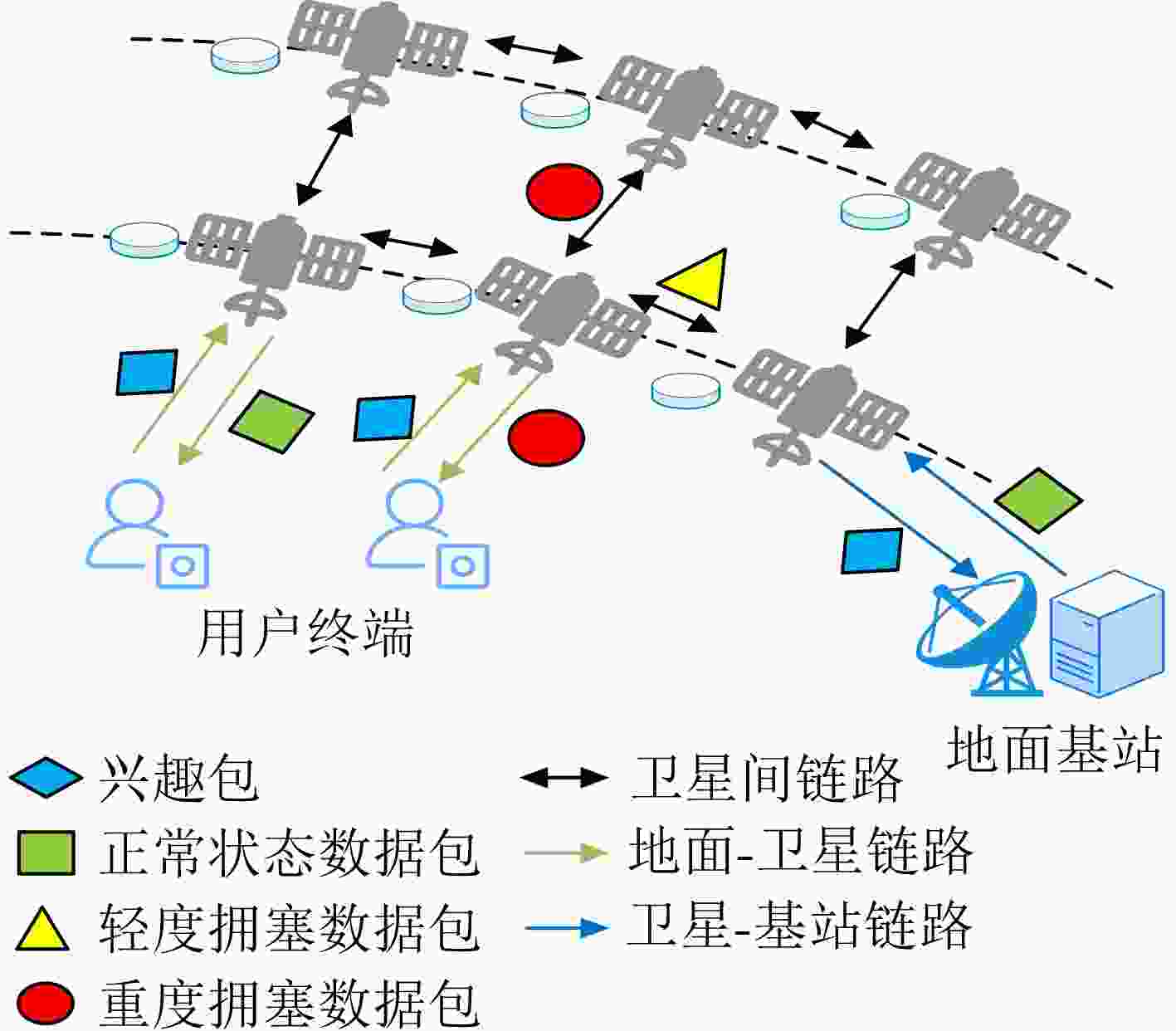
 下载:
下载:

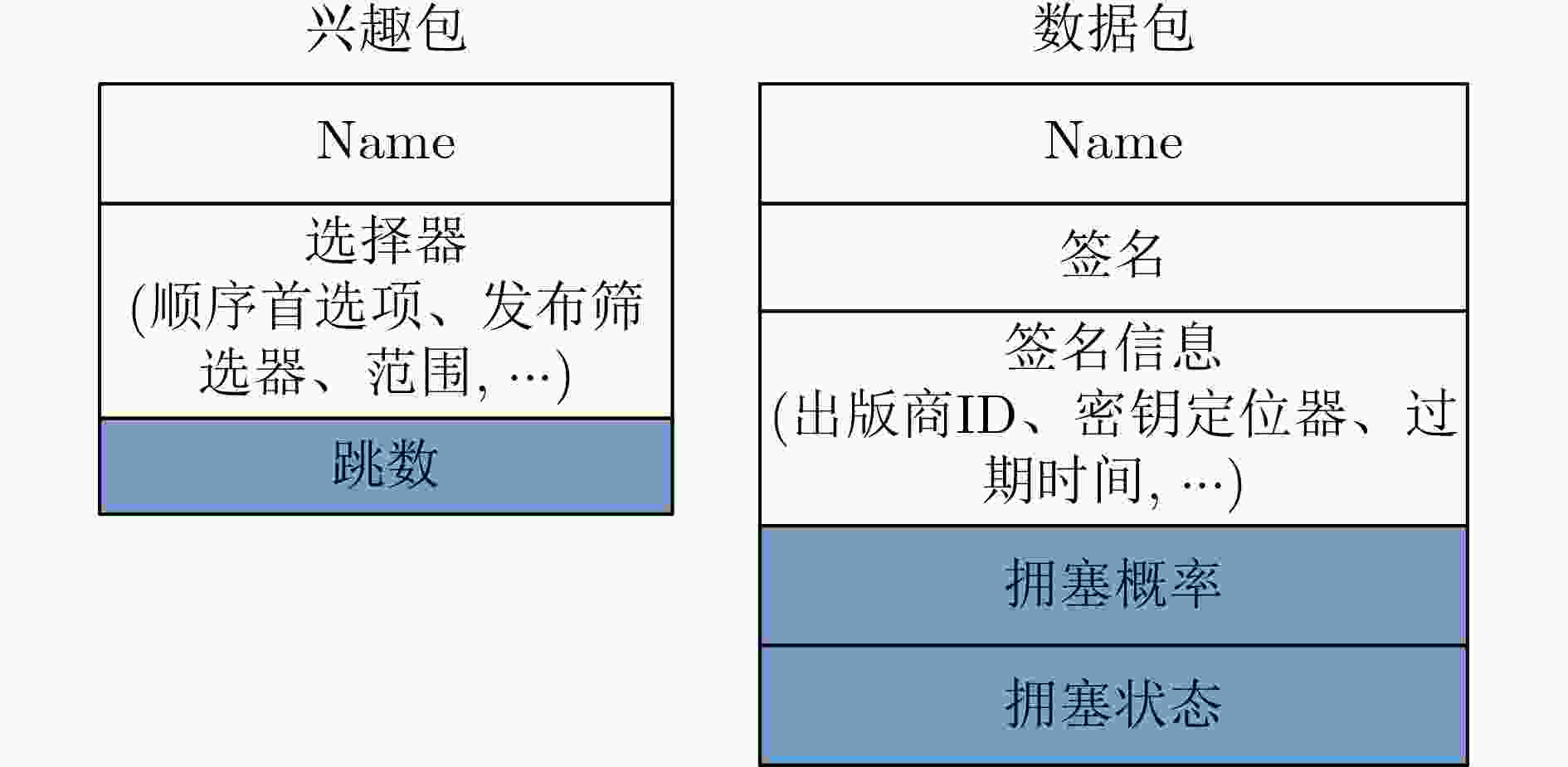
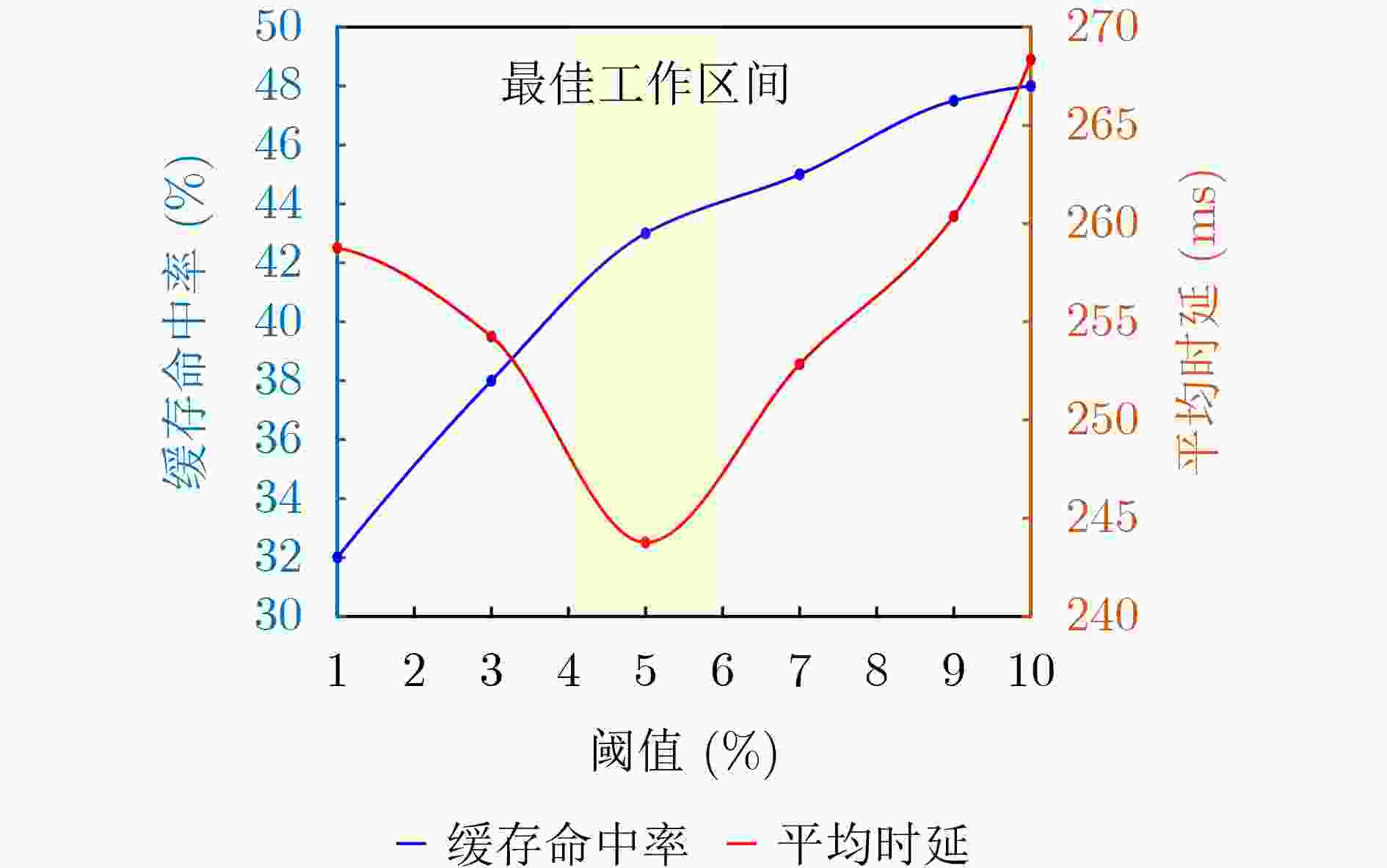
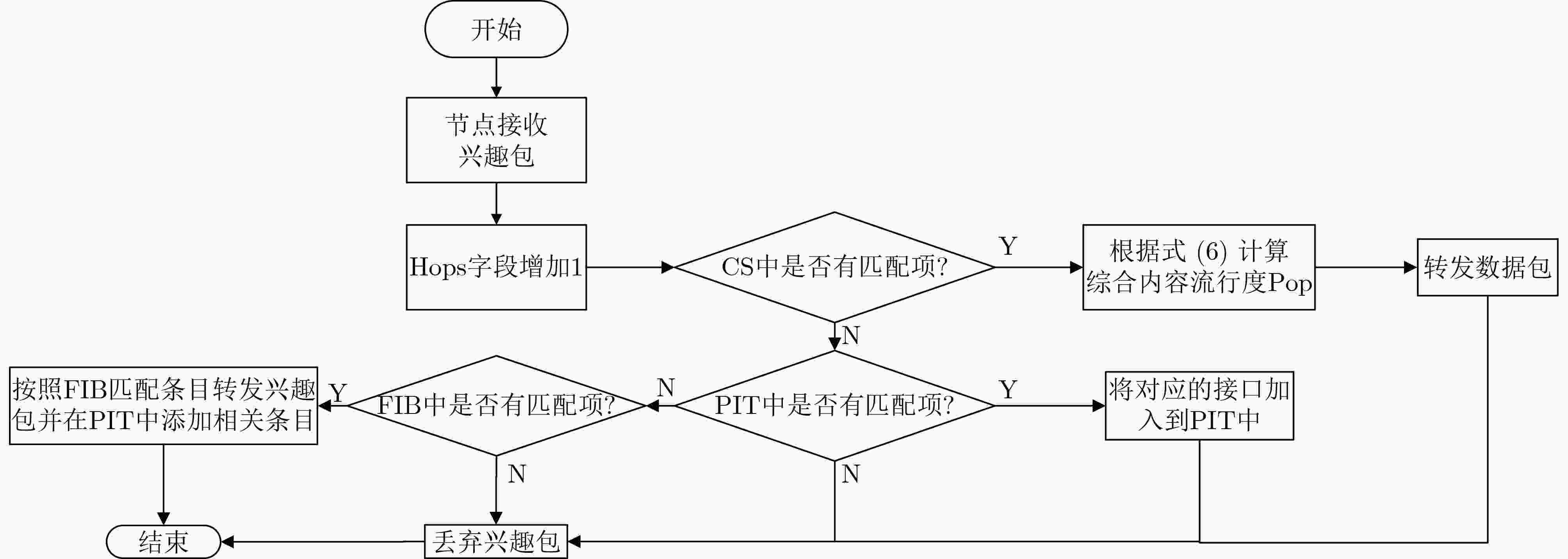
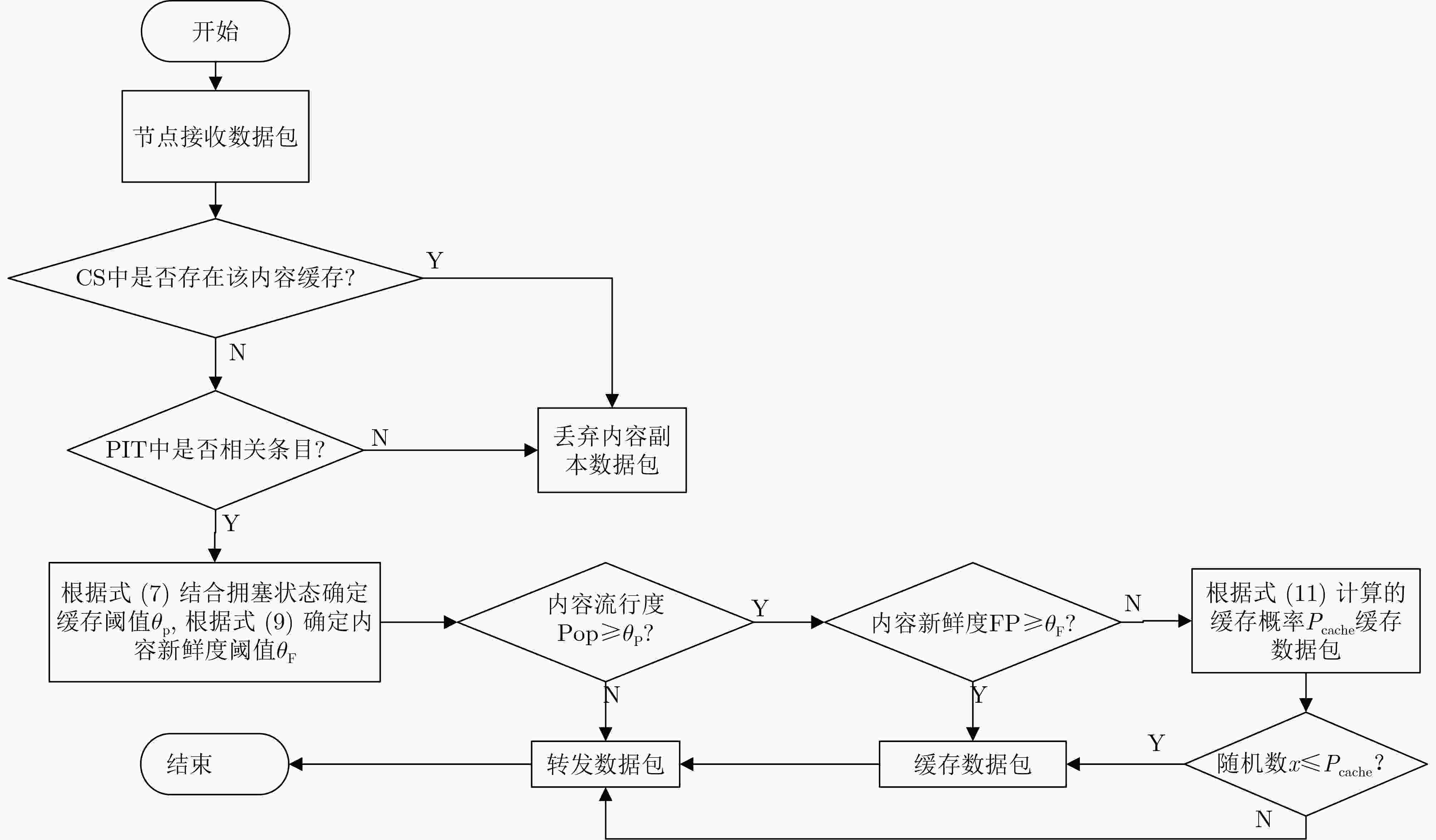


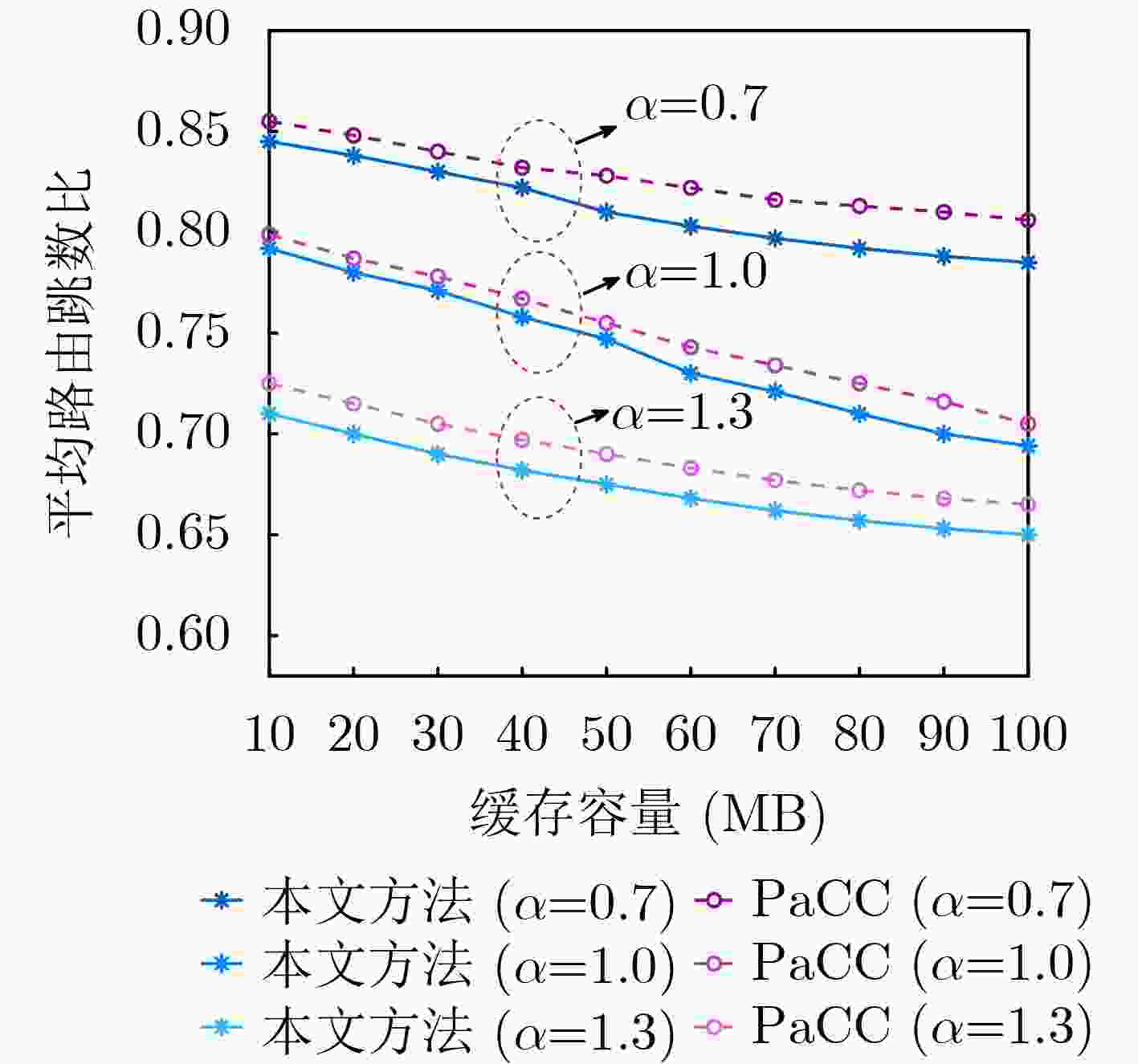
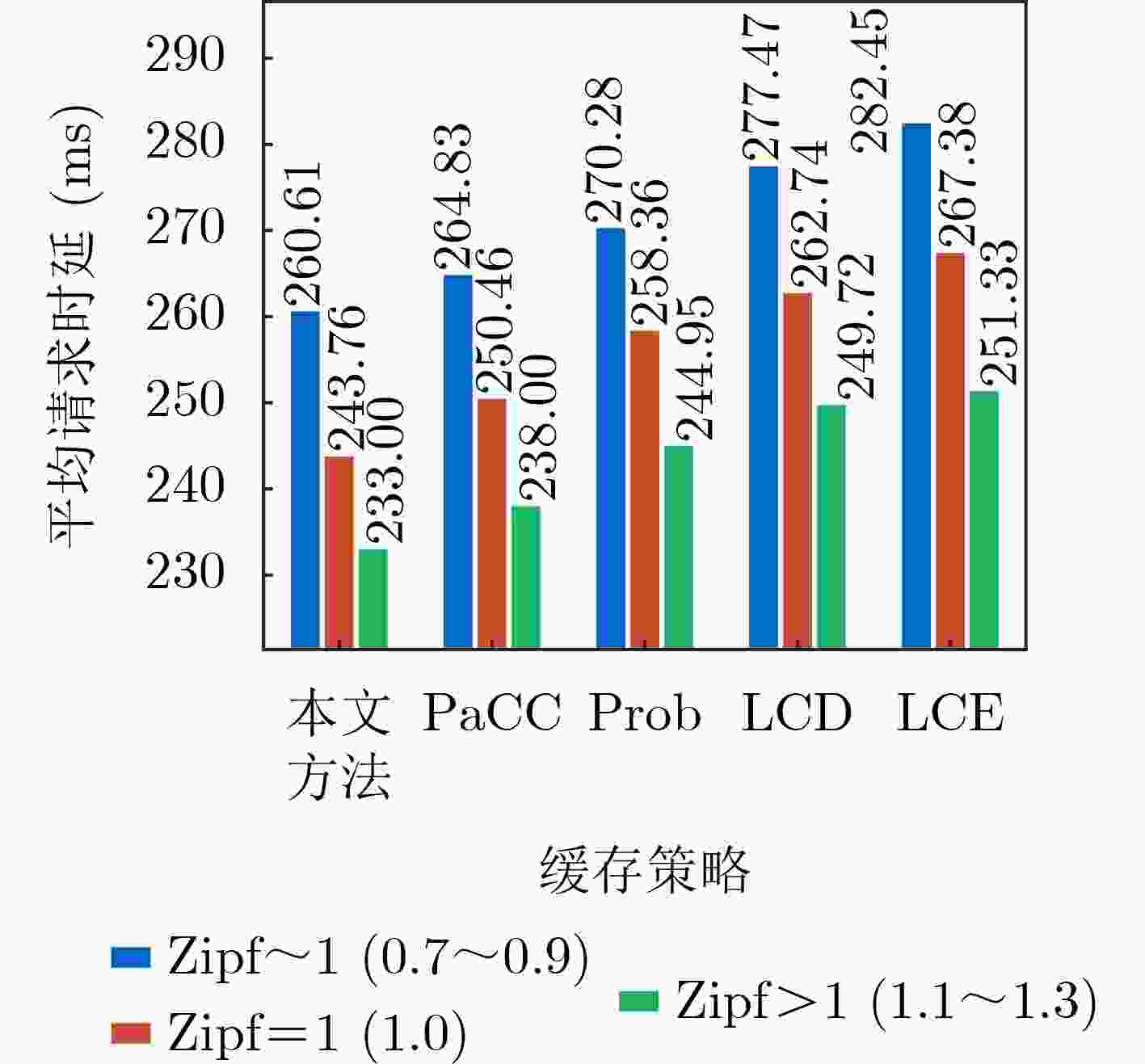


 下载:
下载:
